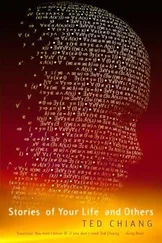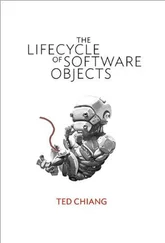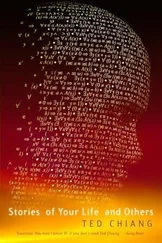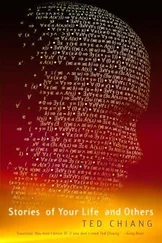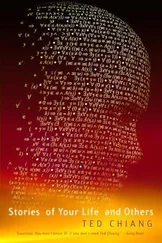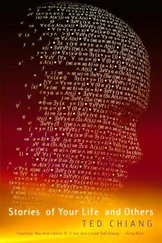When I looked at the faces again, some of them seemed… different. Like they were glowing, or more vivid or something. It’s hard to describe. The nurse showed me my test results afterwards, and there were readings for how wide my pupils were dilating and how well my skin conducted electricity and stuff like that. And for the faces that seemed different, the readings went way up. She said those were the beautiful faces.
She said that I’d notice how other people’s faces look right away, but it’d take a while before I had any reaction to how I looked. Supposedly you’re too used to your face to tell.
And yeah, when I first looked in a mirror, I thought I looked totally the same. Since I got back from the doctor’s, the people I see on campus definitely look different, but I still haven’t noticed any difference in how I look. I’ve been looking at mirrors all day. For a while I was afraid that I was ugly, and any minute the ugliness was going to appear, like a rash or something. And so I’ve been staring at the mirror, just waiting, and nothing’s happened. So I figure I’m probably not really ugly, or I’d have noticed it, but that means I’m not really pretty either, because I’d have noticed that too. So I guess that means I’m absolutely plain, you know? Exactly average. I guess that’s okay.
Joseph Weingartner:
Inducing an agnosia means simulating a specific brain lesion. We do this with a programmable pharmaceutical called neurostat; you can think of it as a highly selective anesthetic, one whose activation and targeting are all under dynamic control. We activate or deactivate the neurostat by transmitting signals through a helmet the patient puts on. The helmet also provides somatic positioning information so the neurostat molecules can triangulate their location. This lets us activate only the neurostat in a specific section of brain tissue, and keep the nerve impulses there below a specified threshold.
Neurostat was originally developed for controlling seizures in epileptics and for relief of chronic pain; it lets us treat even severe cases of these conditions without the side effects caused by drugs that affect the entire nervous system. Later on, different neurostat protocols were developed as treatments for obsessive-compulsive disorder, addictive behavior, and various other disorders. At the same time, neurostat became incredibly valuable as a research tool for studying brain physiology.
One way neurologists have traditionally studied specialization of brain function is to observe the deficits that result from various lesions. Obviously, this technique is limited because the lesions caused by injury or disease often affect multiple functional areas. By contrast, neurostat can be activated in the tiniest portion of the brain, in effect simulating a lesion so localized that it would never occur naturally. And when you deactivate the neurostat, the ‘lesion’ disappears and brain function returns to normal.
In this way neurologists were able to induce a wide variety of agnosias. The one most relevant here is prosopagnosia, the inability to recognize people by their faces. A prosopagnosic can’t recognize friends or family members unless they say something; he can’t even identify his own face in a photograph. It’s not a cognitive or perceptual problem; prosopagnosics can identify people by their hairstyle, clothing, perfume, even the way they walk. The deficit is restricted purely to faces.
Prosopagnosia has always been the most dramatic indication that our brains have a special ‘circuit’ devoted to the visual processing of faces; we look at faces in a different way than we look at anything else. And recognizing someone’s face is just one of the face-processing tasks we do; there are also related circuits devoted to identifying facial expressions, and even detecting changes in the direction of another person’s gaze.
One of the interesting things about prosopagnosics is that while they can’t recognize a face, they still have an opinion as to whether it’s attractive or not. When asked to sort photos of faces in order of attractiveness, prosopagnosics sorted the photos in pretty much the same way as anyone else. Experiments using neurostat allowed researchers to identify the neurological circuit responsible for perceiving beauty in faces, and thus essentially invent calliagnosia.
Maria deSouza:
SEE has had extra neurostat programming helmets set up in the Student Health Office, and made arrangements so they can offer calliagnosia to anyone who wants it. You don’t even have to make an appointment, you can just walk in. We’re encouraging all the students to try it, at least for a day, to see what it’s like. At first it seems a little odd, not seeing anyone as either good-looking or ugly, but over time you realize how positively it affects your interactions with other people.
A lot of people worry that calli might make them asexual or something, but actually physical beauty is only a small part of what makes a person attractive. No matter what a person looks like, it’s much more important how the person acts; what he says and how he says it, his behavior and body language. And how does he react to you? For me, one of the things that attracts me to a guy is if he seems interested in me . It’s like a feedback loop; you notice him looking at you, then he sees you looking at him, and things snowball from there. Calli doesn’t change that. Plus there’s that whole pheromone chemistry going on too; obviously calli doesn’t affect that.
Another worry that people have is that calli will make everyone’s face look the same, but that’s not true either. A person’s face always reflects their personality, and if anything, calli makes that clearer. You know that saying, that after a certain age, you’re responsible for your face? With calli, you really appreciate how true that is. Some faces just look really bland, especially young, conventionally pretty ones. Without their physical beauty, those faces are just boring. But faces that are full of personality look as good as they ever did, maybe even better. It’s like you’re seeing something more essential about them.
Some people also ask about enforcement. We don’t plan on doing anything like that. It’s true, there’s software that’s pretty good at guessing if a person has calli or not, by analyzing eye-gaze patterns. But it requires a lot of data, and the campus security cams don’t zoom in close enough. Everyone would have to wear personal cams, and share the data. It’s possible, but that’s not what we’re after. We think that once people try calli, they’ll see the benefits themselves.
Tamera Lyons:
Check it out, I’m pretty!
What a day. When I woke up this morning I immediately went to the mirror; it was like I was a little kid on Christmas or something. But still, nothing; my face still looked plain. Later on, I even ( laughs ) I tried to catch myself by surprise, by sneaking up on a mirror, but that didn’t work. So I was kind of disappointed, and feeling just, you know, resigned to my fate.
But then this afternoon, I went out with my roommate Ina and a couple other girls from the dorm. I hadn’t told anyone that I’d gotten my calli turned off, because I wanted to get used to it first. So we went to this snack bar on the other side of campus, one I hadn’t been to before. We were sitting at this table, talking, and I was looking around, just seeing what people looked like without calli. And I saw this girl looking at me, and I thought, ‘She’s really pretty.’ And then, ( laughs ) this’ll sound really stupid, then I realized that this wall in the snack bar was a mirror, and I was looking at myself!
Читать дальше




